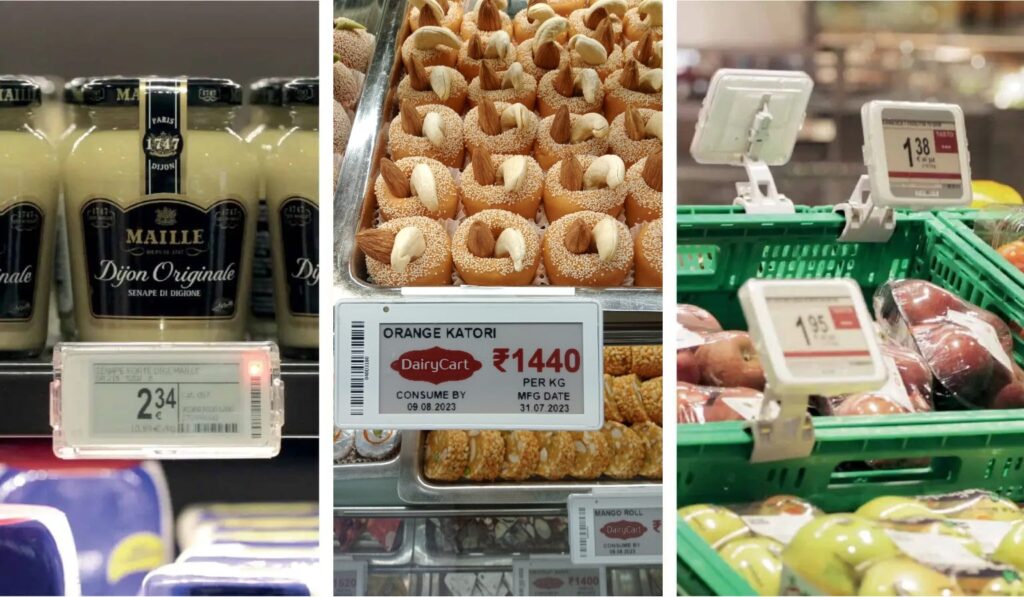Electronic Shelf Label (ESL)

Electronic Shelf Label (ESL): Revolutionizing Retail Technology
An Electronic Shelf Label aka Electronic Price Label or Electronic Display for shop is a digital price tag used by retailers for displaying product pricing on shelves. The system uses wireless communication networks to automatically update prices, product information, and digital media directly on the shelf edge.
The primary purpose of an Electronic Sheld Label or Electronic Display for shop is to provide accurate, real-time pricing and product information to customers. It eliminates the need for paper tags, which can be time-consuming and costly to update. With ESL, retailers can change prices instantly across multiple locations, ensuring price integrity, reducing discrepancies between the shelf price and the point of sale (POS).
Moreover, ESL enhance the customer experience by displaying additional product information, QR codes, barcodes, discount offers or promotional messages. They also contribute to a more sustainable retail environment by eliminating paper tags.


Electronic Shelf Label Work ?
ESLs use low-power wireless communication technologies such as Radio Frequency (RF), Infrared (IR), or Near-Field Communication (NFC) to receive pricing updates from the central server. The process is as follows:
1. The retailer updates the product price or information in the central server.
2. The server sends the updated information to the ESLs via the wireless network.
3. Each ESL has a unique ID, which allows the system to update the correct label.
4. The ESL displays the new price or information on its digital screen.

ESL Base Station
An Electronic Shelf Label (ESL) Base Station is a crucial component of the Electronic Shelf Label system, which is widely used in the retail industry and other sectors. The base station serves as the central hub for communication between the server and the electronic labels displayed on the shelves.
The primary purpose of an ESL base station is to facilitate the transmission of price updates and other information from the central server to the electronic shelf labels. This allows for real-time updates of product information, ensuring that the displayed data is always accurate and up-to-date.
ESL Server Software
ESL Server Software is a digital system used in retail environments to automate the process of managing and updating pricing information on product shelves. This software is a key component of the Electronic Shelf Label system, which includes digital labels and the software that manages them.
ESL Server Software provides a centralized system for managing product pricing and information in a retail environment. This software allows retailers to update pricing information in real-time, ensuring that the prices displayed on the shelves match those at the checkout. It also helps to reduce labor costs associated with manual price updates and reduces the risk of pricing errors.

Benefits of Using Electronic Shelf Labels
• Real-time Pricing Updates: ESLs allow for instant price updates, which is particularly useful for price matching, promotions, or dynamic pricing strategies.
• Cost and Time Efficiency: ESLs eliminate the need for manual price updates, saving time and reducing labor costs.
• Improved Price Accuracy: ESLs ensure price integrity, reducing discrepancies between the shelf price and the POS.
• Enhanced Customer Experience: ESLs can display additional product information, QR codes, or promotional messages, enhancing the shopping experience.
• Environmental Sustainability: By eliminating paper tags, ESLs contribute to a more sustainable retail environment.
